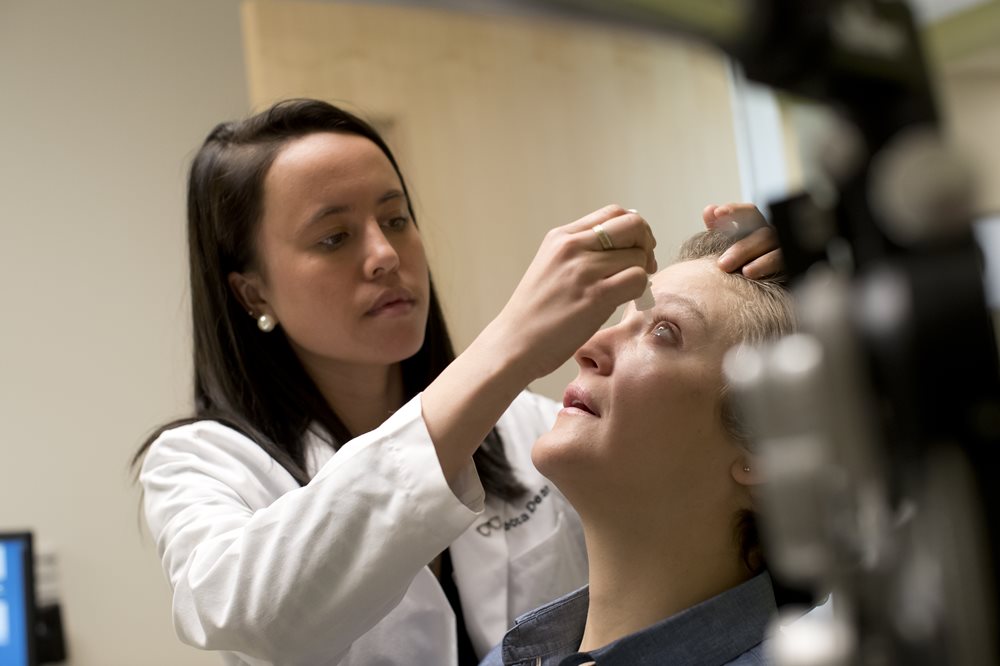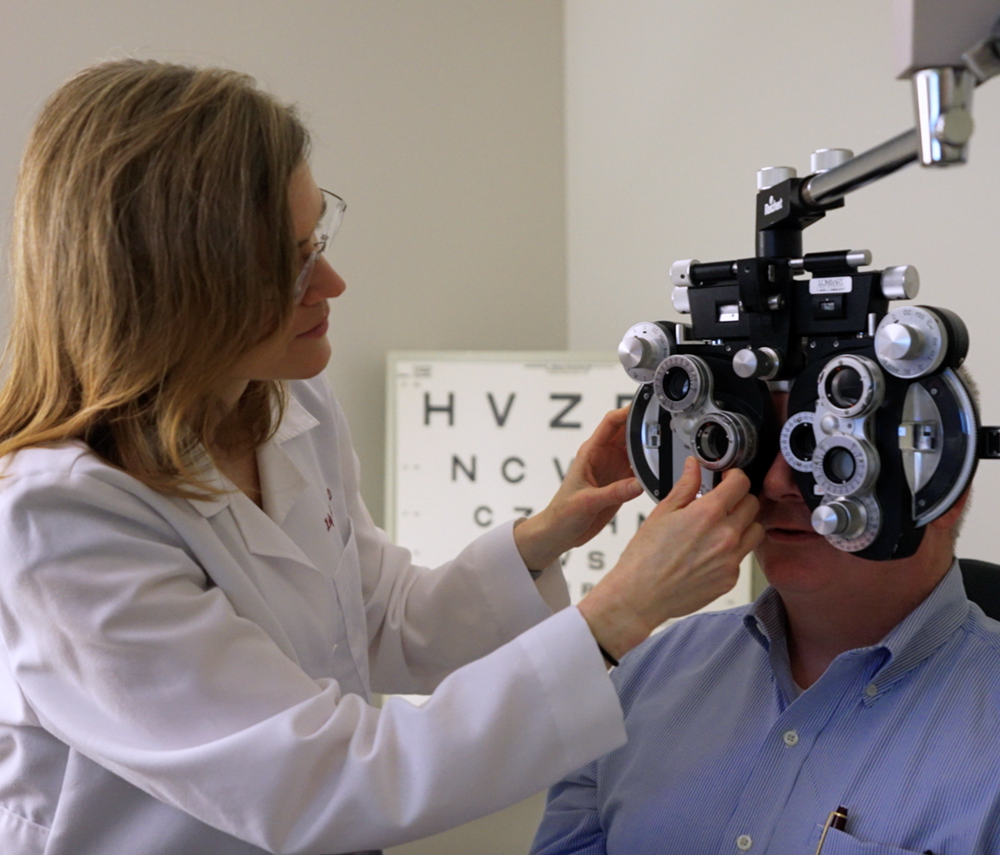Thyroid Eye Disease
 Thyroid eye disease, also known as Graves’ Eye Disease, is an autoimmune disease in which the immune system causes inflammation and swelling and stimulates the production of muscle tissue and fat behind the eye.
Thyroid eye disease, also known as Graves’ Eye Disease, is an autoimmune disease in which the immune system causes inflammation and swelling and stimulates the production of muscle tissue and fat behind the eye.
Thyroid eye disease may occur in patients who already know they have thyroid disease, or it may be the first sign of Graves’ disease or hyperthyroidism. Eye symptoms can range from mild to severe but only 10-20% of patients have this sight -hreatening disease.
While thyroid eye disease often occurs in people living with hyperthyroidism or Graves’ disease, it is a distinct disease and treating hyperthyroidism may not resolve the eye symptoms and signs.
 Signs and Symptoms of Thyroid Eye Disease
Signs and Symptoms of Thyroid Eye Disease
- Redness and pain
- Puffiness around the eyes
- Bulging of the eyes
- Dry eye and irritation or grittiness
- Excessive tearing
- Double vision
Risk Factors
Although thyroid eye disease is most commonly associated with Graves’ disease, it can also occur with normal thyroid hormone levels or low levels of thyroid hormones (hypothyroidism).
 Other risk factors for thyroid eye disease include:
Other risk factors for thyroid eye disease include:
- Family history of thyroid eye disease
- Smoking
- Age – it usually affects middle-age adults but can occur at any age
- Females are affected more than males
- Radioactive iodine therapy
- Low blood levels of selenium, a dietary mineral
Diagnosis and Treatment
If you have thyroid disease and suspect you may have thyroid eye disease, your doctor may recommend for you to see an eye doctor. Treatment can include:
- Cool compresses to your eyes: The extra moisture may provide relief.
- Sunglasses: When you have thyroid eye disease your eyes are more vulnerable to ultraviolet rays and more sensitive to sunlight. Wearing sunglasses helps protect them from both sun and wind.
- Lubricating eyedrops: Eyedrops, like artificial tears, may help relieve dryness and scratchiness.
 Elevate the head of your bed: Keeping your head higher than the rest of your body may reduce swelling and may help relieve pressure on your eyes.
Elevate the head of your bed: Keeping your head higher than the rest of your body may reduce swelling and may help relieve pressure on your eyes.- Prisms: If double vision is a problem, glasses containing prisms may be prescribed by your doctor.
- Steroids: Swelling in the eyes may be improved by treatment with steroids (such as hydrocortisone or prednisone).
- Surgery: With significant thyroid eye disease, rehabilitative surgery may be required to return the eyes to their previous appearance and function. A series of different operations including operating on the eyelids, eye muscles or orbital decompression to reduce the pressure behind the eyes, may be needed.
 The Eye Institute of Salus University’s Neuro-Ophthalmic Disease Specialty Service treats vision related problems and issues associated with the brain, nerves, and muscles. The neuro-ophthalmic disease service doctors will evaluate and co-manage your condition with other medical providers as needed.
The Eye Institute of Salus University’s Neuro-Ophthalmic Disease Specialty Service treats vision related problems and issues associated with the brain, nerves, and muscles. The neuro-ophthalmic disease service doctors will evaluate and co-manage your condition with other medical providers as needed.
To schedule an appointment with one of the doctors in The Eye Institute’s Neuro-Ophthalmic Disease Service, please contact The Eye Institute at 215.276.6111.